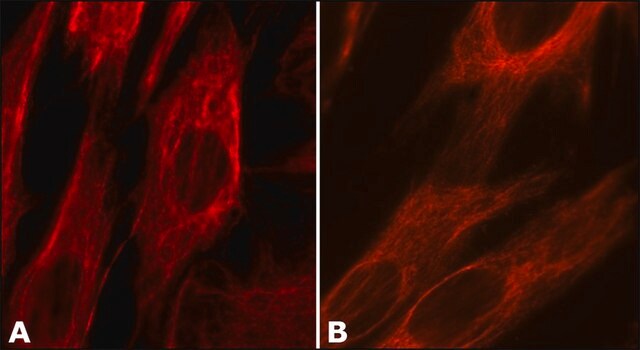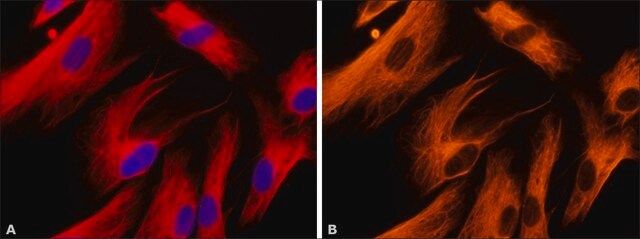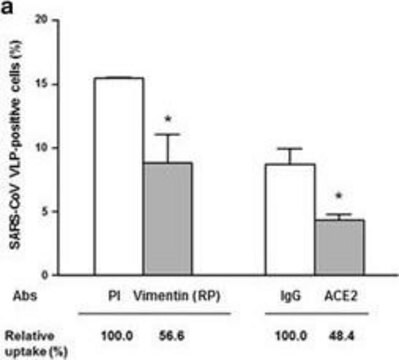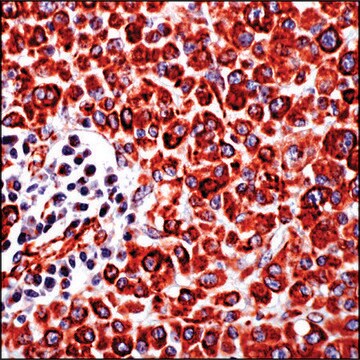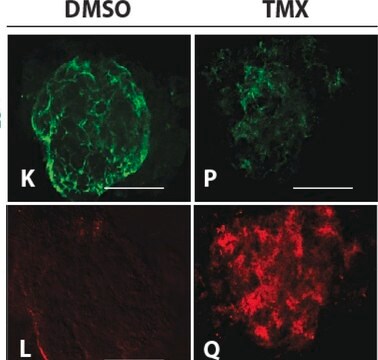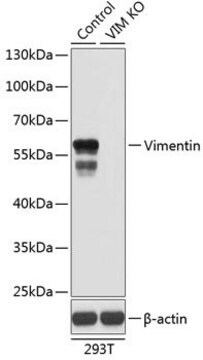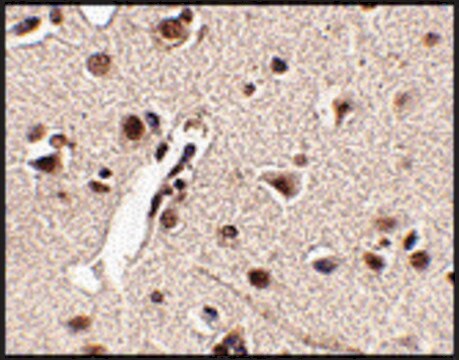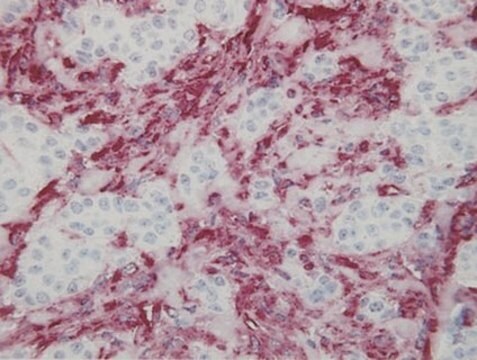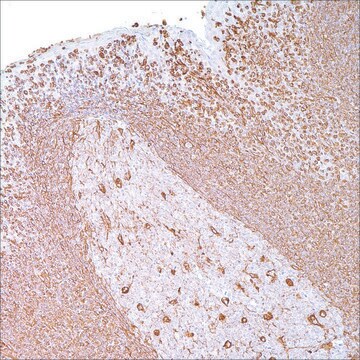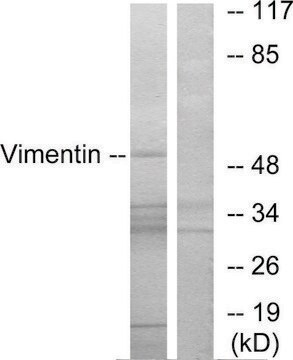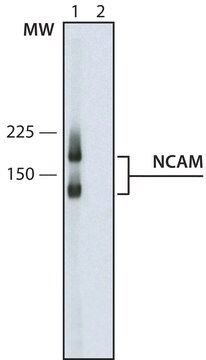V2258
Monoclonal Anti-Vimentin antibody produced in mouse
clone LN-6, ascites fluid
Sinónimos:
Anti-F5H288
About This Item
Productos recomendados
biological source
mouse
Quality Level
conjugate
unconjugated
antibody form
ascites fluid
antibody product type
primary antibodies
clone
LN-6, monoclonal
contains
15 mM sodium azide
species reactivity
pig, mouse, sheep, human, bovine, rabbit, feline, rat
technique(s)
immunohistochemistry (formalin-fixed, paraffin-embedded sections): 1:200 using human tissue sections
immunoprecipitation (IP): suitable
indirect immunofluorescence: suitable using cultured cells
western blot: suitable
isotype
IgM
UniProt accession no.
shipped in
dry ice
storage temp.
−20°C
target post-translational modification
unmodified
Gene Information
human ... VIM(7431)
mouse ... Vim(22352)
rat ... Vim(81818)
General description
Specificity
Immunogen
Application
Biochem/physiol Actions
Disclaimer
¿No encuentra el producto adecuado?
Pruebe nuestro Herramienta de selección de productos.
Optional
Storage Class
12 - Non Combustible Liquids
wgk_germany
nwg
flash_point_f
Not applicable
flash_point_c
Not applicable
Certificados de análisis (COA)
Busque Certificados de análisis (COA) introduciendo el número de lote del producto. Los números de lote se encuentran en la etiqueta del producto después de las palabras «Lot» o «Batch»
¿Ya tiene este producto?
Encuentre la documentación para los productos que ha comprado recientemente en la Biblioteca de documentos.
Los clientes también vieron
Artículos
Alzheimer's disease (AD) is the most common cause of dementia in the elderly and is characterized by gradual loss of cognitive functions.
Nuestro equipo de científicos tiene experiencia en todas las áreas de investigación: Ciencias de la vida, Ciencia de los materiales, Síntesis química, Cromatografía, Analítica y muchas otras.
Póngase en contacto con el Servicio técnico

